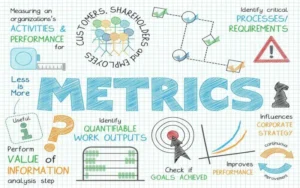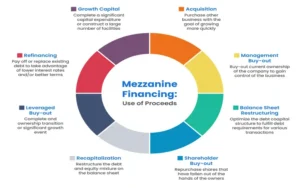What exactly is a merger?
A merger is an arrangement that combines two current businesses into one new one. There are various sorts of mergers, as well as various reasons why firms accomplish mergers. Mergers and acquisitions (M&A) are frequently used to broaden a company’s reach, grow into new markets, or increase market share. All of this is done to boost shareholder value. Corporations frequently have a no-shop provision during a merger to prevent companies from purchasing or merging further.
How does a merger work?
A merger is the voluntary combination of two businesses on roughly equal terms into one new legal entity. The organizations that have agreed to merge are similar in size, clients, and operational scale. As a result, the phrase “merger of equals” is sometimes employed. Unlike mergers, acquisitions are often not consensual and involve one firm deliberately purchasing another.
Mergers are most typically used to enhance market share, lower operating costs, expand into new markets, combine similar products, grow revenues, and increase profits—all of which should benefit the firms’ shareholders. Following a merger, existing shareholders of both original businesses receive shares of the new company.
Because of the high number of mergers, a mutual fund named The Merger Fund from Virtus Investment Partners was established to allow investors to profit from mergers. The fund invests in the difference between the offer and trading prices. It makes investments in companies that have publicly announced a merger or acquisition. Since its inception in 1989, the fund has returned 5.8% annually (as of March 31, 2022).
Merger Varieties
Depending on the goals of the companies involved, there are numerous mergers. Some of the most typical types of mergers are listed below.
Conglomerate
This is a merger of two or more companies involved in unrelated business activity. The companies may operate in different industries or geographical regions. A pure conglomerate is made up of two companies that have nothing in common. A mixed conglomerate, on the other hand, occurs when businesses that are engaged in unrelated business activities unite to obtain product or market extensions.
Companies with no overlapping variables will merge only if it makes sense from the standpoint of shareholder wealth, that is, if the companies can produce synergy, which includes boosting value, performance, and cost savings. When the Walt Disney Company joined the American Broadcasting Company (ABC) in 1995, a conglomerate was formed.
Congeneric
A product-extension merger is another name for a congeneric merger. It is a merger of two or more companies that operate in the same market or sector and have overlapping factors such as technology, marketing, manufacturing processes, and research and development (R&D). A product extension merger occurs when a new product line from one company is combined with an established product line from another. When two companies merge as part of a product extension, they get access to a more extensive range of consumers and, as a result, a larger market share. Citigroup’s 1998 merger with Travelers Insurance, two companies with complementary goods, is an example of a congeneric merger.
Expansion of the Market
This merger occurs when two companies sell similar items but compete in separate markets. Companies that engage in market extension mergers hope to obtain access to a larger market and, as a result, a more extensive client base. Eagle Bancshares and RBC Centura combined in 2002 to expand their markets.
Horizontal
A horizontal merger occurs when two companies in the same industry merge. Typically, the merger is part of a consolidation between competitors offering the same products or services. Because rivalry among fewer companies is intense, such mergers are typical in industries with fewer firms. The goal is to establish a more significant business with a greater market share and economies of scale. A horizontal merger is the 1998 combination of Daimler-Benz and Chrysler.
Vertical
When two companies that create parts or services for a product join, the combination is referred to as a vertical merger. A vertical merger happens when companies operating at various levels within the same industry’s supply chain consolidate their operations. Such mergers increase synergies obtained through cost reductions from a merger with one or more supply firms. One of the most well-known vertical mergers occurred in 2000 when internet service provider America Online (AOL) merged with media powerhouse Time Warner.
Mergers Examples
An example of how mergers work and bring companies together is Anheuser-Busch InBev (BUD). The corporation was formed due to several mergers, consolidations, and market extensions in the beer industry. Anheuser-Busch InBev was formed by the amalgamation of three significant worldwide beverage companies: Interbrew (Belgium), Ambev (Brazil), and Anheuser-Busch (United States).
Ambev, combined with Interbrew, brings together the world’s third- and fifth-largest brewers. When Ambev and Anheuser-Busch joined, they became the world’s largest and second-largest brewers, respectively. This example demonstrates both horizontal mergers and market extensions because it was an industry consolidation and extended the international reach of all the combined company’s brands.
The largest mergers in history have each cost more than $100 billion. Vodafone purchased Mannesmann for $181 billion 2000, forming the world’s largest mobile telecoms firm. In 2000, AOL and Time Warner vertically merged in a $164 billion deal widely regarded as one of the most significant disasters in history.
Verizon Communications paid $130 billion for Vodafone’s 45% interest in Vodafone Wireless in 2014.
What Exactly Is a Horizontal Merger?
A horizontal merger occurs when two competitive companies that sell the same products or services unite. A horizontal merger is the combination of T-Mobile and Sprint. Meanwhile, a vertical merger combines two corporations that produce separate products, such as AT&T and Time Warner.
What Exactly Is a SPAC Merger?
A special-purpose acquisition company (SPAC) merger occurs when a publicly traded SPAC raises cash through the public markets to purchase an operational company. The operating company merges with SPAC to become a publicly traded corporation.
What Exactly Is a Reverse Merger?
A reverse merger, sometimes known as a reverse takeover (RTO), is a private company’s acquisition of a publicly traded firm. Archipelago Holdings and the New York Stock Exchange (NYSE) executed a reverse merger in 2006.
Conclusion
- Companies merge to reach more people, enter new markets, or get a more significant market share.
- A merger is when two companies join voluntarily and on equal terms to form a new legal entity.
- These are the five main types of mergers: horizontal, vertical, conglomerate, and market growth.


































